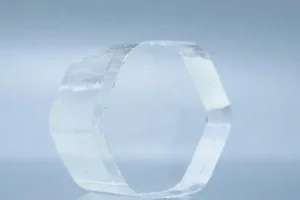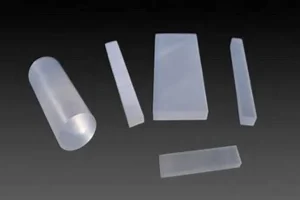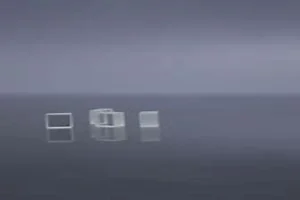BBO and LBO crystals are critical components in the world of optics and photonics, each with its own distinct advantages and disadvantages. We explore these two materials in detail, providing insights into their unique properties and applications.
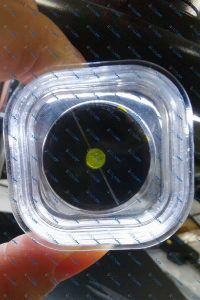
A Deep Dive into BBO Crystals
Beta Barium Borate (BBO) crystals are widely used in the non-linear optics field due to their excellent optical properties.
Advantages of BBO Crystals
As we wade further into the depths of BBO crystals, their advantages seem to multiply. A significant factor that makes BBO crystals a tour de force in non-linear optics is their high damage threshold. They are like armored tanks, shrugging off intense laser beams without losing their efficacy. This ability to withstand high-intensity laser beams makes them indispensable in high-power laser systems.
BBO crystals also have a broad transparency range, stretching from the deep ultraviolet to the far infrared. Picture them as a prism, capable of separating a broad spectrum of light, casting a rainbow of possibilities. This vast range widens their applicability across an array of optical applications, including frequency doubling, electro-optic modulation, and optical parametric oscillation.
Disadvantages of BBO Crystals
Despite their impressive attributes, BBO crystals do have Achilles heels. Their hygroscopic nature stands out as a notable disadvantage. Imagine leaving a sugar cube out in the open; it will absorb moisture and lose its shape. Similarly, BBO crystals can degrade over time when exposed to moisture. This necessitates careful handling and storage procedures to maintain their performance.
Another limitation is their sensitivity to temperature changes. BBO crystals operate optimally within a certain temperature range. It’s like keeping a tropical fish in an aquarium; too hot or too cold, and the fish can’t survive. When the temperature deviates from this optimal range, the performance of BBO crystals may decline.
Unraveling LBO Crystals
Lithium triborate (LBO) crystals are non-linear optical crystals that have wide-ranging applications in the laser industry.
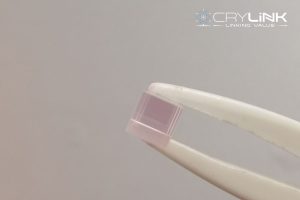
Disadvantages of LBO Crystals
In the world of LBO crystals, a wealth of advantages lies. LBO crystals are like a desert cactus, thriving where others might struggle. Their non-hygroscopic nature means they’re impervious to moisture, enhancing their longevity and reducing the need for stringent storage conditions.
Furthermore, LBO crystals boast a wide operating temperature range. They are like chameleons, adapting to the changing ‘climate’ of different operating conditions without any loss in performance. This versatility means they’re suitable for a plethora of applications, regardless of the environmental conditions.
While LBO crystals possess significant advantages, they’re not without their drawbacks. In contrast to the armored tank that is a BBO crystal, LBO crystals are more like light infantry. They have a lower damage threshold, meaning they’re less effective when faced with high-intensity lasers.
This could limit their use in applications where high laser power is needed.
Additionally, LBO crystals have a narrower transparency range compared to BBO crystals. If BBO crystals are a wide-angle lens capturing a broad panorama, LBO crystals are more like a portrait lens, focusing on a narrower field of view. This characteristic might restrict the range of frequencies they can effectively manage, somewhat limiting their applicability.
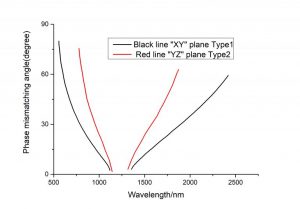
The Evolution of Non-linear Optics: The Impact of BBO and LBO Crystals
The story of non-linear optics is a saga of continuous evolution, driven by advances in crystal technologies. Like the lead actors in an epic drama, BBO and LBO crystals have made profound impacts on this landscape, enabling us to delve deeper into the mysteries of light.
Beta Barium Borate (BBO) and Lithium Triborate (LBO) crystals have been the twin pillars supporting the arch of progress in non-linear optics. Their unique properties have unlocked doors to realms of optical phenomena previously unexplored. BBO crystals, with their broad transparency range and high damage threshold, have been key to harnessing the power of high-intensity lasers and ultraviolet light. Conversely, the resilience of LBO crystals in the face of environmental variations has ensured consistent performance under varying conditions.
Their influence extends beyond the field of non-linear optics, shaping the broader sphere of photonics. The strength of BBO crystals has empowered laser systems’ development, while the versatility of LBO crystals has found resonance in diverse applications from telecommunications to medical technologies.
But, their impact isn’t merely limited to their individual abilities. The symbiotic relationship between BBO and LBO crystals, each complementing the other’s shortcomings, has been instrumental in their combined success. Together, they have created a harmonious balance, allowing us to manipulate light in ways once deemed impossible, propelling us forward into the future of photonics.
Conclusion
Like the two sides of a coin, BBO and LBO crystals each have their unique advantages and drawbacks. The choice between them isn’t black and white but rather a spectrum of considerations dictated by the specific application at hand.
BBO crystals, with their ability to handle high-intensity lasers, might be the perfect fit for high-power laser systems. On the other hand, the resilience of LBO crystals against environmental variations could make them the crystal of choice for applications requiring consistent performance across a range of conditions.
In conclusion, the journey towards the future of non-linear optics is a path lit by the light of BBO and LBO crystals. By appreciating their strengths and understanding their limitations, we can choose the right crystal for the right application, leveraging their unique properties to push the boundaries of photonics technology. Through this understanding, we’ll continue to drive advancements in this exciting field, writing the next chapter in the epic saga of non-linear optics.
Frequently Asked Questions
- What are the main differences between BBO and LBO crystals?
BBO crystals have a higher damage threshold and a broader transparency range, while LBO crystals are non-hygroscopic and have a wider operating temperature range.
- Why are BBO crystals hygroscopic?
BBO crystals contain barium, which reacts with water in the air, making them hygroscopic.
- What are the applications of LBO crystals?
LBO crystals are used in various applications, including frequency doubling, optical parametric oscillation, and sum-frequency generation.
- Can BBO crystals be used at high temperatures?
BBO crystals perform best within a limited temperature range. Beyond this, their performance may degrade.
- How can the longevity of BBO crystals be increased?
The longevity of BBO crystals can be improved by storing and using them in low-humidity environments.


